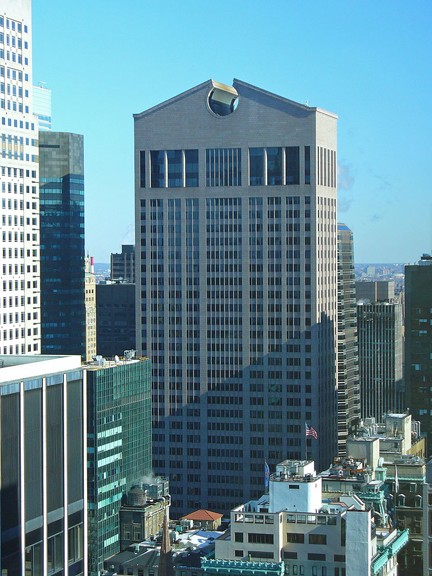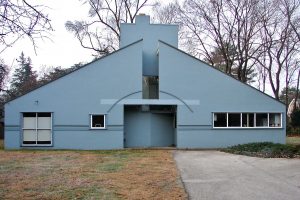8.1 Experimentation, Deconstruction and Sustainability
Please Read
Postmodern Architecture (https://boisestate.pressbooks.pub/arthistory/chapter/modernism-america/)
During the 1960s, 70s, and 80s architects began to turn away from the stark lines of the International Style with a return to ornamentation. This was part of the cultural zeitgeist of the time which seemed to be a kind of general exhaustion with the forms of modernism. Francis Fukuyama’s essay The End of History, published in 1989, suggested that political systems had reached their final evolution with liberal democracies – Western culture had reached the end of history. This was echoed in Postmodern architecture by incorporating, or appropriating, styles or ornament from the past and incorporating those forms onto new buildings. The idea of appropriation also made its way into painting and sculpture with artists literally using images already created by other artists and recreating them wholly or in part. Sherrie Levine rephotographed some of the iconic work of Edward Weston: https://smarthistory.org/sherrie-levine-untitled-after-edward-weston/
The Centre Georges Pompidou is in the Beaubourg area of the 4th arrondissement of Paris, near Les Halles, rue Montorgueil and the Marais and houses much of Paris’ contemporary art.
Visit the Pompidou Center, Paris, 1971-11 here: https://vimeo.com/197148859
Designed by the architectural team of Richard Rogers and Renzo Piano, along with Gianfranco Franchini, the Centre Pompidou is more high tech than Postmodern, the Beaubourg, as it is called, does seem to be a building turned inside out with the structures that are usually hidden made the primary exterior architectural features. In that way, it participates in the Postmodern idea of “deconstruction” made popular during the 1980s by French philosopher and semiotician Jacques Derrida. Derrida analyzed texts by close readings meant to question the relationship between structure and language and ultimately the impossibility of meaning in language as he saw it. It has become an important theoretical underpinning of many disciplines including architecture, art, and critical theory.


Robert Venturi and Denise Scott Brown

Articulating his own vernacular ideas about designing architecture, Robert Venturi delivered his seminal text Complexity and Contradiction in Architecture in 1966, and he is said to have designed the first postmodern piece of architecture in 1964 when he designed his elderly mother’s home in Philidelphia known as the Vanna Venturi House.
Frank Gehry – choose to read
Chapter 4 Deconstruction: The Project of Radical Self-Criticism in Elie G. Haddad, and David Rifkind. A Critical History of Contemporary Architecture : 1960-2010. Routledge, 2014. https://doi.org/10.4324/9781315263953
“Frank Gehry: ‘Architecture and Any Art Can Transform a Person, Even Save Someone.’” La Rivista Domus Dedicata Ai Mondi Dell’Architettura, Del Design e Dell’Arte, Domusweb, 25 May 2021, https://www.domusweb.it/en/biographies/frank-owen-gehry.html?fbclid=IwAR2Nvfl6YBNckhSHDvfnbDx9DxJYBTuPMNl-fhuzb6nU0sY4h8S8HXq5Ehc.
Choose to read one
Chapter 2 Philip Tabb 1960s: An Environmental Awakening in Tabb, P.J., & Deviren, A.S. (2014). The Greening of Architecture: A Critical History and Survey of Contemporary Sustainable Architecture and Urban Design (1st ed.). Routledge. https://doi.org/10.4324/9781315239293
Chapter 5 Philip Tabb, Greening Architecture: The Impact of Sustainability in Elie G. Haddad, and David Rifkind. A Critical History of Contemporary Architecture : 1960-2010. Routledge, 2014. https://doi.org/10.4324/9781315263953
Sria Chatterjee, “The Arts, Environmental Justice, and the Ecological Crisis”, British Art Studies, Issue 18, https://doi.org/10.17658/issn.2058-5462/issue-18/conversation

